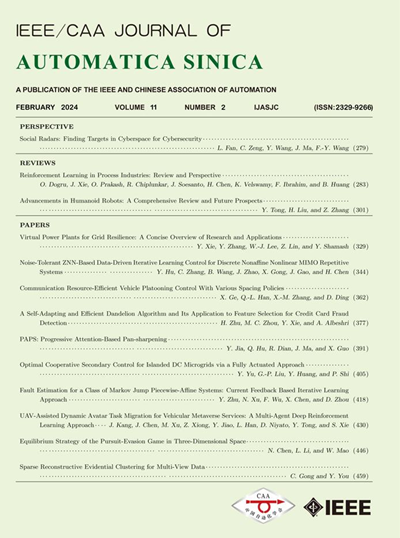基于交易行为的分层门控网络信用卡欺诈检测
IF 19.2
1区 计算机科学
Q1 AUTOMATION & CONTROL SYSTEMS
引用次数: 0
摘要
检测信用卡交易中的欺诈行为对于确保金融系统的安全性和稳定性以及增强客户对数字支付系统的信心至关重要。从历史上看,信用卡公司已经使用基于规则的方法来检测欺诈性交易,但由于欺诈策略的复杂性,这些方法已经被证明是不够的,并且已经被基于机器学习或深度学习算法的更强大的解决方案所取代。尽管取得了重大进展,但目前的欺诈检测方法仍存在一些局限性:例如,尚不清楚某些交易特征在区分欺诈交易方面是否比其他交易特征更有效,而且它们往往忽视了交易之间可能存在的相关性,尽管它们可能揭示非法行为。本文提出了一种基于交易行为的分层门控网络的信用卡欺诈检测方法。首先,我们引入了一个面向特征的提取模块,能够从原始交易中识别关键特征,这种分析对于揭示欺诈者的行为特征是有效的。其次,我们设计了一个面向事务的提取模块,能够捕获用户历史和当前事务行为之间的相关性。这些信息对于揭示用户的连续行为模式至关重要。我们的方法,称为基于事务行为的分层门控网络模型(TbHGN),提取两种类型的新事务特征,然后将其组合在特征交互模块中,以学习用于CCFD的最终事务表示。我们在真实世界的信用卡交易数据集上进行了广泛的实验,与现有技术相比,平均F1增加了1.42%到6.53%,平均AUC提高了0.63%到2.78%。本文章由计算机程序翻译,如有差异,请以英文原文为准。
A Transactional-Behavior-Based Hierarchical Gated Network for Credit Card Fraud Detection
The task of detecting fraud in credit card transactions is crucial to ensure the security and stability of a financial system, as well as to enforce customer confidence in digital payment systems. Historically, credit card companies have used rule-based approaches to detect fraudulent transactions, but these have proven inadequate due to the complexity of fraud strategies and have been replaced by much more powerful solutions based on machine learning or deep learning algorithms. Despite significant progress, the current approaches to fraud detection suffer from a number of limitations: for example, it is unclear whether some transaction features are more effective than others in discriminating fraudulent transactions, and they often neglect possible correlations among transactions, even though they could reveal illicit behaviour. In this paper, we propose a novel credit card fraud detection (CCFD) method based on a transaction behaviour-based hierarchical gated network. First, we introduce a feature-oriented extraction module capable of identifying key features from original transactions, and such analysis is effective in revealing the behavioural characteristics of fraudsters. Second, we design a transaction-oriented extraction module capable of capturing the correlation between users' historical and current transactional behaviour. Such information is crucial for revealing users' sequential behaviour patterns. Our approach, called transactional-behaviour-based hierarchical gated network model (TbHGN), extracts two types of new transactional features, which are then combined in a feature interaction module to learn the final transactional representations used for CCFD. We have conducted extensive experiments on a real-world credit card transaction dataset with an increase in average F1 between 1.42% and 6.53% and an improvement in average AUC between 0.63% and 2.78% over the state of the art.
求助全文
通过发布文献求助,成功后即可免费获取论文全文。
去求助
来源期刊

Ieee-Caa Journal of Automatica Sinica
Engineering-Control and Systems Engineering
CiteScore
23.50
自引率
11.00%
发文量
880
期刊介绍:
The IEEE/CAA Journal of Automatica Sinica is a reputable journal that publishes high-quality papers in English on original theoretical/experimental research and development in the field of automation. The journal covers a wide range of topics including automatic control, artificial intelligence and intelligent control, systems theory and engineering, pattern recognition and intelligent systems, automation engineering and applications, information processing and information systems, network-based automation, robotics, sensing and measurement, and navigation, guidance, and control.
Additionally, the journal is abstracted/indexed in several prominent databases including SCIE (Science Citation Index Expanded), EI (Engineering Index), Inspec, Scopus, SCImago, DBLP, CNKI (China National Knowledge Infrastructure), CSCD (Chinese Science Citation Database), and IEEE Xplore.
 求助内容:
求助内容: 应助结果提醒方式:
应助结果提醒方式:


